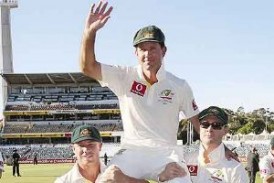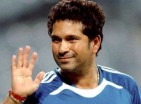Where To From Here?
Cameron Burge |
Much has been made over the past 12 months about Australia’s return to the field in the longer form of the game. Occasional criticism has rightly been raised of Ricky Ponting’s captaincy and of a batting line up more prone to collapse than was the case with those of the immediate past. But are these really the burning problems in Australia’s Test line up?
Australia’s batting line up remains, for the most part, well settled. Ponting and Michael Clarke are two of the better Test batsmen in world cricket, though Ponting’s returns in recent times are better described as good to very good rather than stratospheric, as they were a few years ago. Nevertheless, his hundred at Cardiff and stunning cameo at Headingly confirm the skipper still has what it takes at the highest level. He and the vice-captain are still the glue which binds the line-up. For his part, Marcus North could not have been expected to have performed better since his debut in South Africa, while Brad Haddin at seven gives the batting real depth, and no shortage of pyrotechnics. True it is that Australia was profligate in the first innings at Lord’s, but to be fair to their opponents, they were undone by quality spells in the first innings at Edgbaston and The Oval, rather than by a lack of application or ability.
Nevertheless, uncertainty remains over one of the opening batting positions. Simon Katich has cemented his spot, though he makes too many starts without converting them into a big hundred. Since Mathew Hayden’s retirement, Phil Hughes debuted with a bang, but left with a whimper after only three innings of the England tour. Plainly he has technical issues which require addressing before he will be seen again. His replacement, Shane Watson performed manfully when asked to open, but his penchant for the lbw decision may count against his long-term future in that role. Many see Watson as a potential middle order replacement for the under pressure Mike Hussey who, despite a career-saving hundred at The Oval, has not impressed for well over a year. Should Hussey go, Watson may bat in the middle order, with Australia’s forgotten man Phil Jaques returning to the top of the order. Alternatively, there is no shortage of middle order batsmen in domestic cricket waiting for a call up.
The real reason Australia is struggling is its bowling. Eighteen months ago, despite Warne and McGrath retiring, most would have expected Brett Lee and Stuart Clark to lead the attack. Indeed, 12 months ago it would have taken a brave cricket follower to predict Australia’s Ashes attack to have been led by Mitchell Johnson with support from Ben Hilfenhaus and Peter Siddle. Nevertheless, long-term injuries to Lee and Clark left this inexperienced attack with the job of taking 20 wickets on a regular basis. The attack surprised everyone with their performances in South Africa, where the efforts of the pace trio were most responsible for Australia’s surprise win.
If Australia could beat South Africa away from home, why then did the same attack struggle to dismiss England, a team nowhere near as strong as the Proteas? The answer is that this raw-boned attack has really only performed when there has been assistance in the wicket for them. This was the case in South Africa, and it was certainly the case at Headingly. In between, Australia could not deliver the coup de grace at Cardiff, and thereafter struggled on the mostly bland surfaces on offer in England. Moreover, while Nathan Hauritz performed serviceably during the Ashes, the fact he was selected to play as a “holding” bowler rather than as an out-and-out wicket taker arguably compounded Australia?s problems, rather than assuage them.
That is not to say Hauritz performed poorly. On the contrary, his work during the Ashes series was just what Ponting asked of him. Trouble is, given the inability of the quicks to take wickets on unresponsive pitches, he was asked to do the wrong job. Australia’s spin travails since Warne’s departure are well documented. Of those who have been tried, only Jason Krezja looked a genuine wicket-taking prospect, yet he was deemed too expensive. The selectors need to look more closely at the spinner’s role. If Australia is to take 20 wickets regularly, all members of its attack must be picked to take wickets, not to hold up an end while the others have a rest. The latter approach is counter-productive. It is also counter-intuitive to the traditional Australian method of playing attacking cricket.
Now that the selectors seem to have settled on Johnson, Siddle and Hilfenhaus as their first choice seamers, Australian fans must remain patient. Johnson is the most experienced of those bowlers, and he has played all of 26 Tests. Each of the three young quicks offers something different, and each has shown commendable potential. Sadly though, potential doesn’t win matches in the here-and-now. Only with time will the incumbent pace trio develop into a formidable unit under all conditions. At home last year against South Africa, Australia was in a dominant position after two days in Perth and Melbourne, but impotent bowling cost them any chance of victory. Doubtless Ponting would like to replay those matches with each of his young pacers having played 40 or so tests. Rarely do bowlers burst into Test cricket and consistently take wickets in all conditions. Even McGrath and Warne took time to get going.
So we must be patient, and allow these bowlers to develop into (hopefully) world-class performers. The challenge for Ponting is to guide the side through the intervening period. He has been criticised for his tactics, and at times they do befuddle. Nevertheless, if Ricky Ponting had the combined attributes of every great captain through cricket history, they would not be worth a jot if he did not have the bowlers to take 20 wickets per Test match.
As it has always been, so it will always be.
It’s all about the bowlers.





Great article Cameron. Agree that we’ll just have to be patient, with a bowling line up full of new guys inconsistency will be a part of our game for a little while at least. While it’s frustrating to watch, especially when we lose to teams we think we should have beaten, we just have to deal with it.
Comment by Son Of Coco | 12:00am BST 25 September 2009
Decent article I still thought the batting was the fault but the bowling does need work. England didn’t put up great totals but England’s batting was terrible all series. Against a very good bowling attack they would barely get past two hundred mark (220-240) on most occasions .Thanks to some of our the bowling they got some ok totals.
Comment by jondavluc | 12:00am BST 25 September 2009
Some good points. I’d say that as Hauritz grows in experience and confidence, and Ponting’s confidence in him conmensurately, he can perform a more attacking role, and indeed looked his best when he did so.
I’m not convinced Hilfenhaus is set as a fixture in the attack. He will find most conditions he encounters a lot less helpful than those in SA or England – he’ll not look a test wicket taking option in Australia, in my opinion.
Comment by matt79 | 12:00am BST 27 September 2009